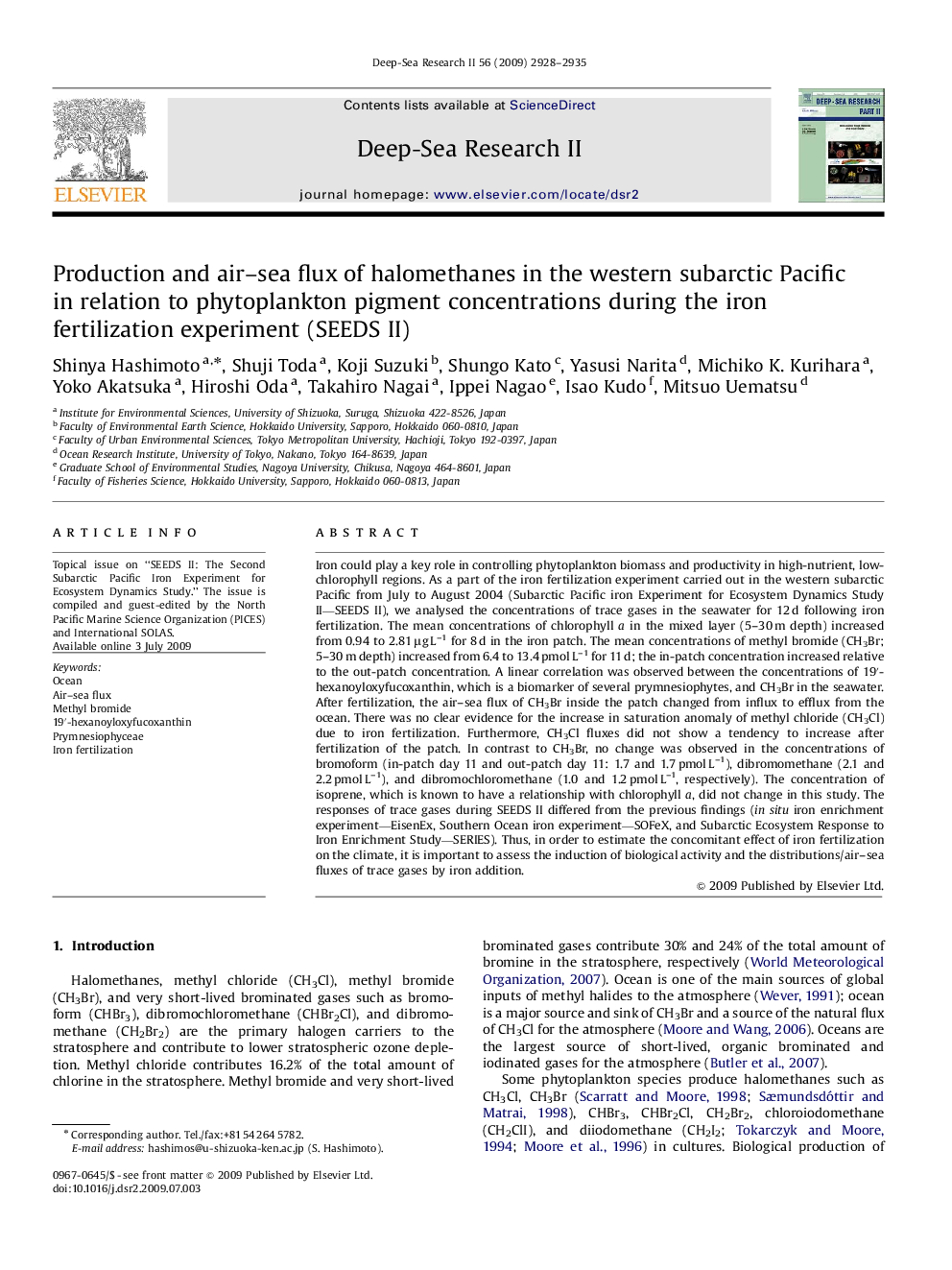| کد مقاله | کد نشریه | سال انتشار | مقاله انگلیسی | نسخه تمام متن |
|---|---|---|---|---|
| 4537710 | 1326382 | 2009 | 8 صفحه PDF | دانلود رایگان |

Iron could play a key role in controlling phytoplankton biomass and productivity in high-nutrient, low-chlorophyll regions. As a part of the iron fertilization experiment carried out in the western subarctic Pacific from July to August 2004 (Subarctic Pacific iron Experiment for Ecosystem Dynamics Study II—SEEDS II), we analysed the concentrations of trace gases in the seawater for 12 d following iron fertilization. The mean concentrations of chlorophyll a in the mixed layer (5–30 m depth) increased from 0.94 to 2.81 μg L–1 for 8 d in the iron patch. The mean concentrations of methyl bromide (CH3Br; 5–30 m depth) increased from 6.4 to 13.4 pmol L–1 for 11 d; the in-patch concentration increased relative to the out-patch concentration. A linear correlation was observed between the concentrations of 19′-hexanoyloxyfucoxanthin, which is a biomarker of several prymnesiophytes, and CH3Br in the seawater. After fertilization, the air–sea flux of CH3Br inside the patch changed from influx to efflux from the ocean. There was no clear evidence for the increase in saturation anomaly of methyl chloride (CH3Cl) due to iron fertilization. Furthermore, CH3Cl fluxes did not show a tendency to increase after fertilization of the patch. In contrast to CH3Br, no change was observed in the concentrations of bromoform (in-patch day 11 and out-patch day 11: 1.7 and 1.7 pmol L–1), dibromomethane (2.1 and 2.2 pmol L–1), and dibromochloromethane (1.0 and 1.2 pmol L–1, respectively). The concentration of isoprene, which is known to have a relationship with chlorophyll a, did not change in this study. The responses of trace gases during SEEDS II differed from the previous findings (in situ iron enrichment experiment—EisenEx, Southern Ocean iron experiment—SOFeX, and Subarctic Ecosystem Response to Iron Enrichment Study—SERIES). Thus, in order to estimate the concomitant effect of iron fertilization on the climate, it is important to assess the induction of biological activity and the distributions/air–sea fluxes of trace gases by iron addition.
Journal: Deep Sea Research Part II: Topical Studies in Oceanography - Volume 56, Issue 26, 15 December 2009, Pages 2928–2935